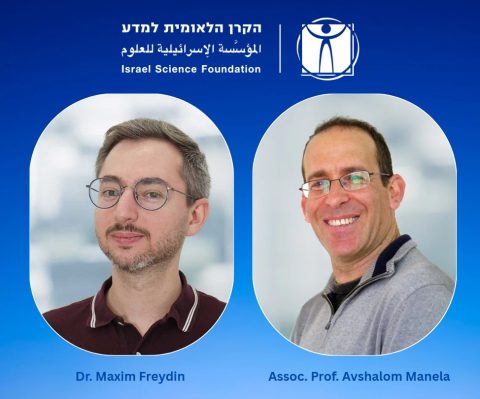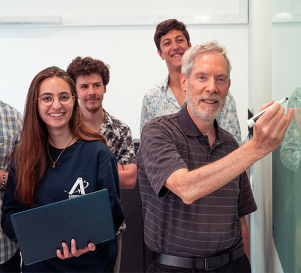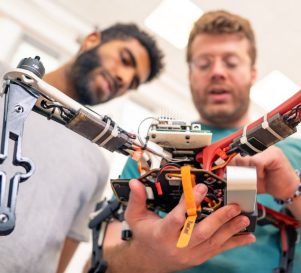We are happy to announce that two faculty members, Assoc. Prof. Avshalom Manela and Dr. Maxim Freydin have been awarded Israel Science Foundation (ISF) grants. ISF is the central body for supporting groundbreaking basic research across various fields of knowledge. Researchers who receive these grants are selected based on their scientific quality and excellence.

Assoc. Prof. Avshalom Manela
Thin airfoil aerodynamics at non-continuum conditions: rarefaction effects in steady and unsteady flow problems
Wings aerodynamics is a fundamental topic in continuum flow mechanics that was studied extensively over the years in all aspects of theoretical, numerical and experimental fluid dynamics. In particular, two-dimensional airfoil theory has served as a benchmark setup for studying gas-object interactions and fluid loading on flying vehicles, as well as a starting point for numerous investigations on single and multi-object aerodynamic setups.
In parallel with continuum-based studies, rarefied gas aerodynamics has been studied since the 1950s, when interest in space flight missions has evolved. Focusing on non-confined (infinite space) conditions, the fluid loading over a thin plate in the free-molecular (collisionless) flow regime was calculated. Later works examined effects such as the surface microscopic model, rarefaction rate and thermal wall properties on the outcome aerodynamic forces. Most of these studies rely on heavy-load numerical calculations, basing their analyses on either the direct simulation Monte Carlo method or model representations of the Boltzmann equation. Being limited in both scope and insight, these investigations should benefit from more rigorous analyses of the kinetic model.
While single airfoil aerodynamics at non-continuum steady flow conditions was previously considered, other canonical setups have not been addressed hitherto. To bridge the gap, the planned project aims at examining the effect of continuum breakdown on the aerodynamic performance in such problems in the entire range of gas rarefaction rates. A sequence of prototype configurations will be considered, seeking to characterize, in each case, the impact of departure from continuum on the near flow field and system aerodynamic efficiency. The scope of problems to be studied will encompass the wind tunnel setup, the ground effect, the wing-with-a-flap configuration, and several other steady and unsteady multi-object geometries. The problems in hand will be investigated both analytically and numerically, to inspect the free-molecular, intermediate, and near-continuum flow regimes. Comparisons will be carried out with existing results in the continuum limit, to shed light on the different mechanisms governing the system aerodynamic efficiency in each regime.
Dr. Maxim Freydin
Aero-Acoustic-Elastic Interaction of Thin-Shell Structures in Supersonic Flow
Aeroelasticity of plates and shells has been studied widely for many decades because the interaction between the flexible structure and the freestream flow represents a simplified model of a skin panel on the surface of a flight vehicle. In supersonic flow, panels can experience flutter and reach a limit cycle oscillation (LCO), a phenomenon distinct from the destructive flutter of larger structures like wings. Understanding the mechanisms governing flutter onset and the characteristics of post-flutter LCO is therefore of great interest.
This problem is often complicated even further by an acoustic-structural coupling. When a panel backs a sealed cavity, its motion generates acoustic pressure that can couple with the aeroelastic system, creating an aero-acoustic-elastic (AAE) problem. The acoustic effects are frequently simplified or ignored, and traditional aeroelastic analyses are insufficient for predicting this coupled instability. Today it remains unclear what is the mechanism behind AAE flutter, when this effect is significant, and what happens in post-flutter LCO in cases when acoustic coupling is essential for instability onset.
This research aims to experimentally demonstrate and measure AAE flutter onset and post-flutter LCO of a flat rectangular panel in a supersonic wind tunnel. The acoustic coupling strength will be modulated by varying the panel’s cavity depth at constant freestream flow conditions. The experiments will be supplemented by theoretical and computational studies to investigate how factors such as static deformation, thermal loads, curvature, and three-dimensional effects influence the dynamics of coupled AAE problems with shells.








